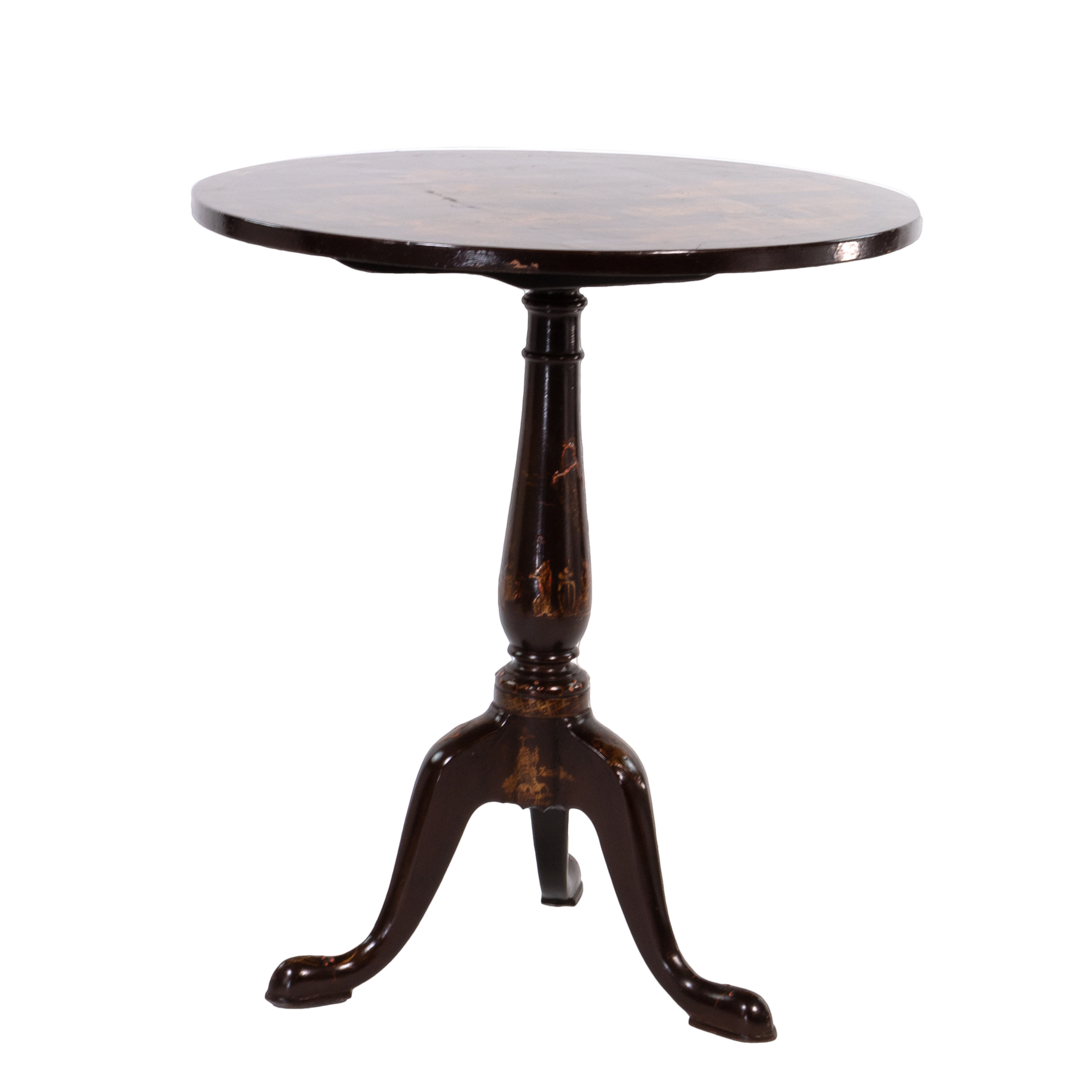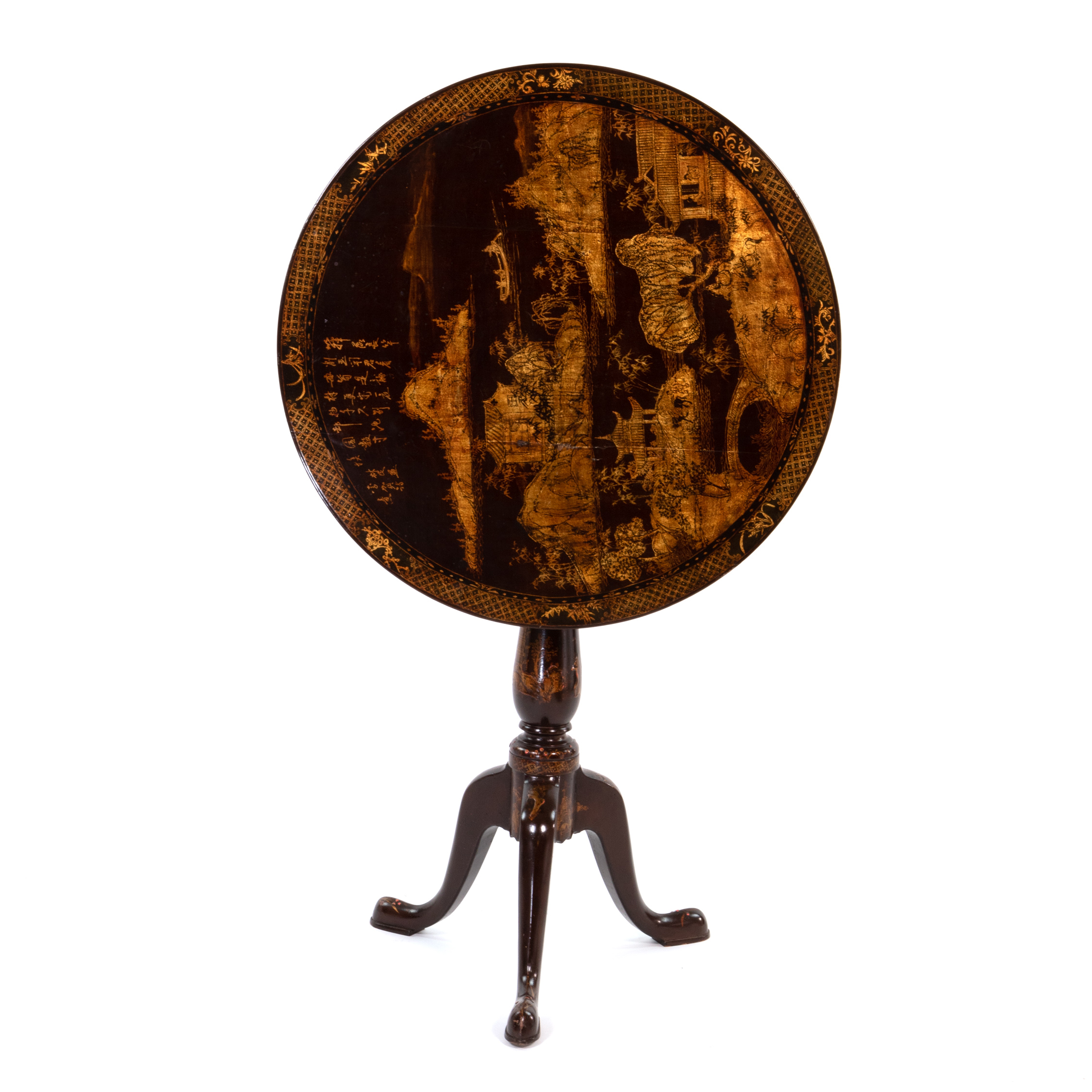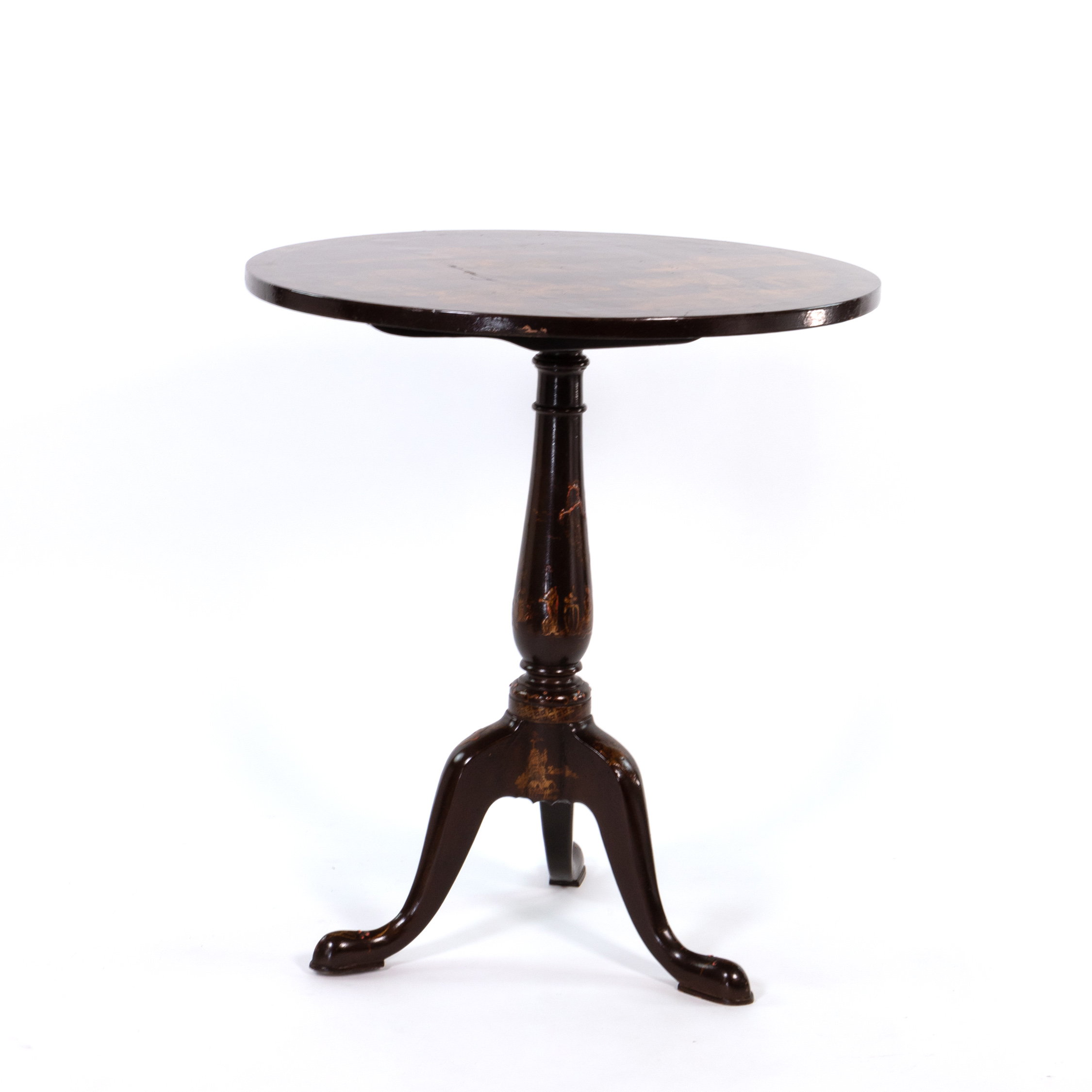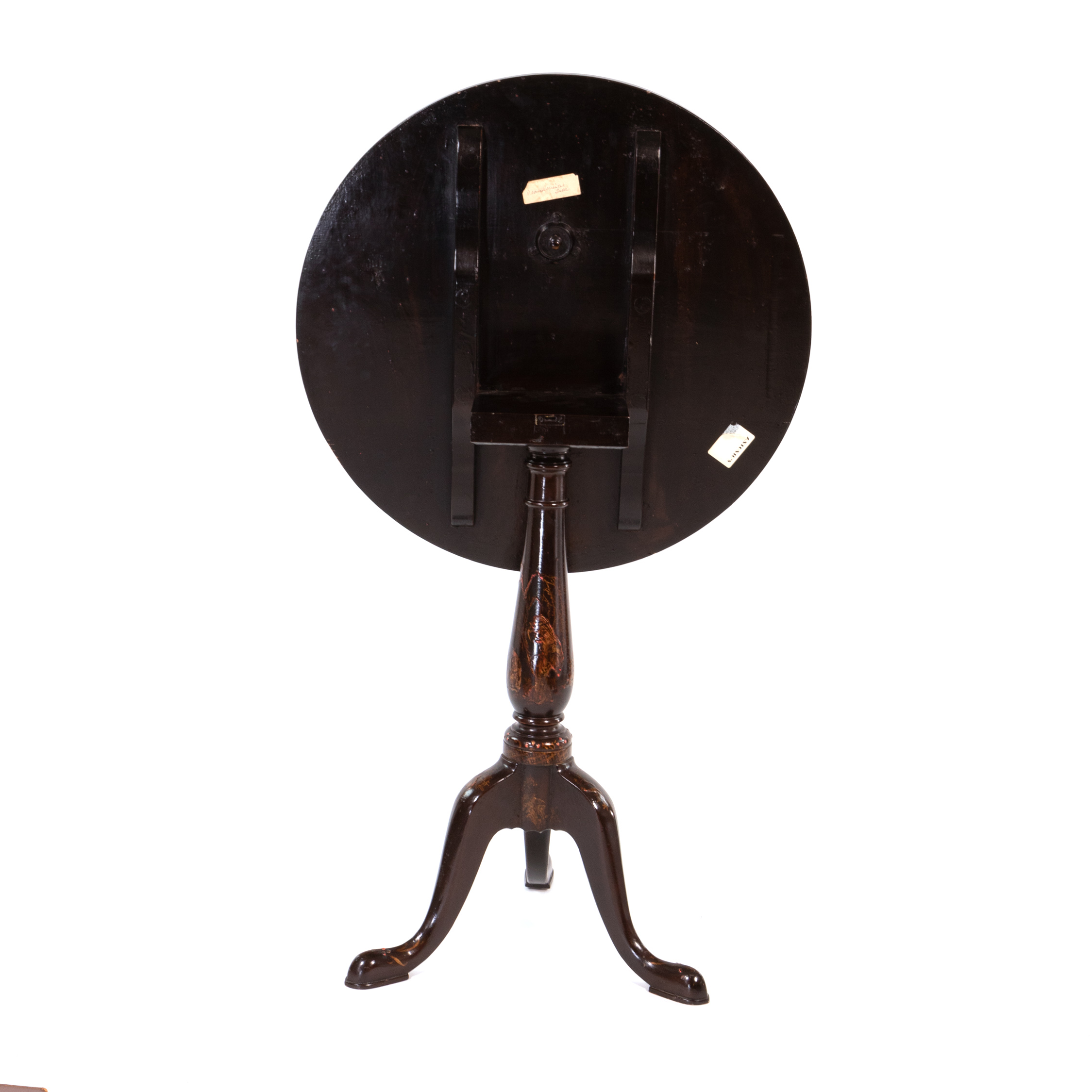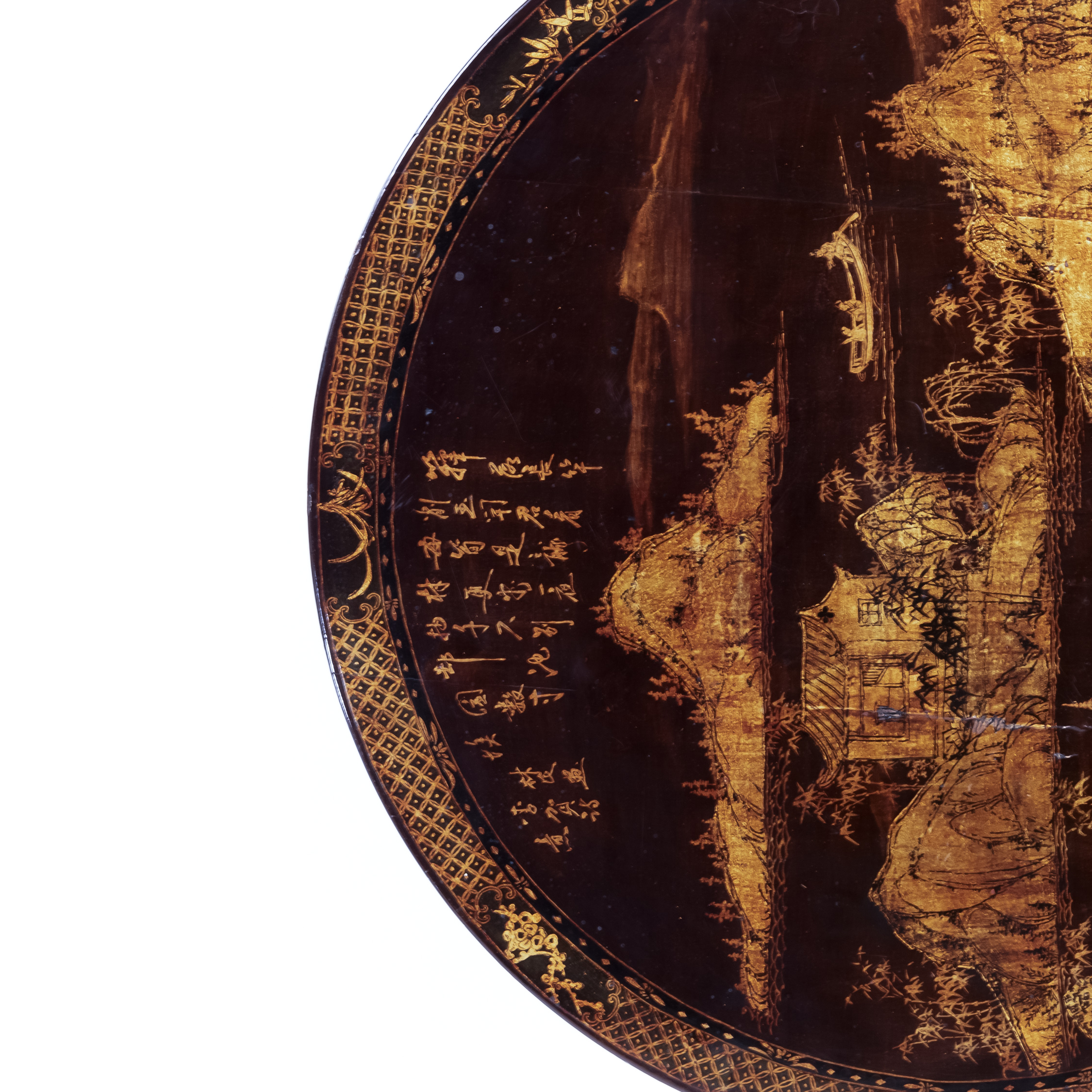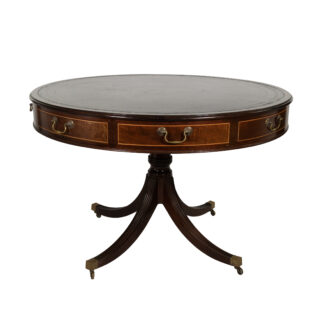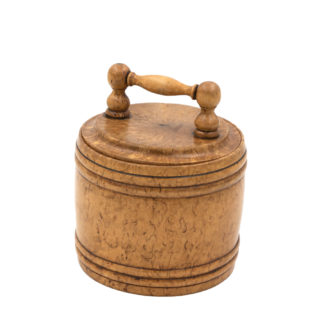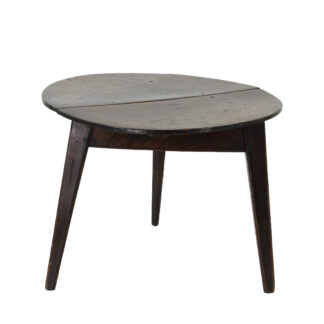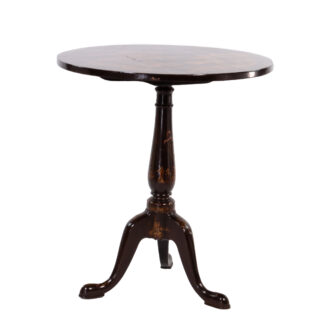Regency Period Black And Gold Chinoiserie Painted Tilt-Top Tripod Table, English Circa 1820
$3,600
Description
Regency period Black and Gold Chinoiserie Painted tilt-top tripod table
English circa 1820 1
height: 28 in. 71 cm., diameter: 24 in. 61 cm.
Further readings and sources:
- This black and gold Chinoiserie painted tilt-top tripod table showcases the best of Chinese influence on Regency design. The use of black and gold paint in combination with the chinoiserie decoration creates a striking contrast that captures the imagination. The tilt-top design is both functional and stylish, allowing the table to be easily stored when not in use. The tripod base is another classic Regency feature, adding a sense of stability and balance to the piece.
The Regency period, which lasted from 1811 to 1820, was marked by a renewed interest in classical forms and a celebration of luxury and elegance. During this time, the influence of Chinese art and culture became increasingly popular in England, as exotic imports from China became more widely available.
While China was not a British colony, the fascination with Chinese styles in England during this time can be attributed to several factors. First, the trade relationship between China and Britain had been established since the 18th century, when the British East India Company began importing tea, silk, and porcelain from China. This created a market for Chinese goods and contributed to a growing interest in Chinese art and culture.
Second, the Regency period saw the emergence of the Romantic movement, which celebrated nature, imagination, and the exotic. Chinese art and design, with its intricate patterns, bright colors, and whimsical motifs, appealed to the Romantic sensibility and offered a refreshing contrast to the strict classical forms of the previous Georgian era.
Overall, this table is a beautiful example of the Regency period’s fascination with Chinese style and the ways in which English craftsmen incorporated those influences into their designs.


